My First ‘Baby’ Ultra
Aged 46, I ran my first ‘baby’ ultramarathon yesterday, 33 miles (53km) running ten 3.3 mile loops over 5 hours and 47 mins in a quiet forest in Northamptonshire, the Big Bear Christmas Challenge.
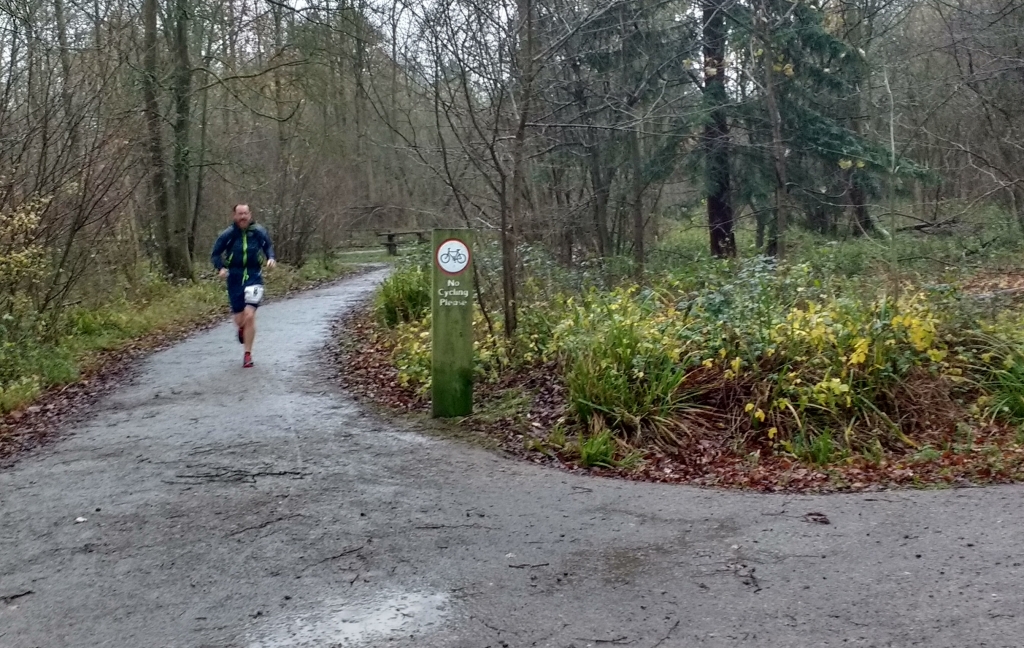

This blog post runs through the preparation for the run, what went well and what didn’t go well, and what I learned from the event.
What is the Big Bear Christmas Challenge?
It’s an organised run in the English midlands (organised by Big Bear Events), in which you run as many 3.3 mile loops of a forest trail as you can within 6 hours. If you’ve the energy then you can get in a final lap as long as you start it within 5 hours, 59 minutes and 59 seconds of the start. Only one runner did this, and it most certainly wasn’t me.

Unlike most organised runs, there is no set distance, so you find yourself running alongside folks doing a 10k, half marathon, full marathon or an ultra-marathon (over 50km, 31 miles) in the same event. Which is a bit weird, as you’ve no idea what the other people around you are doing, unless you ask ’em of course.
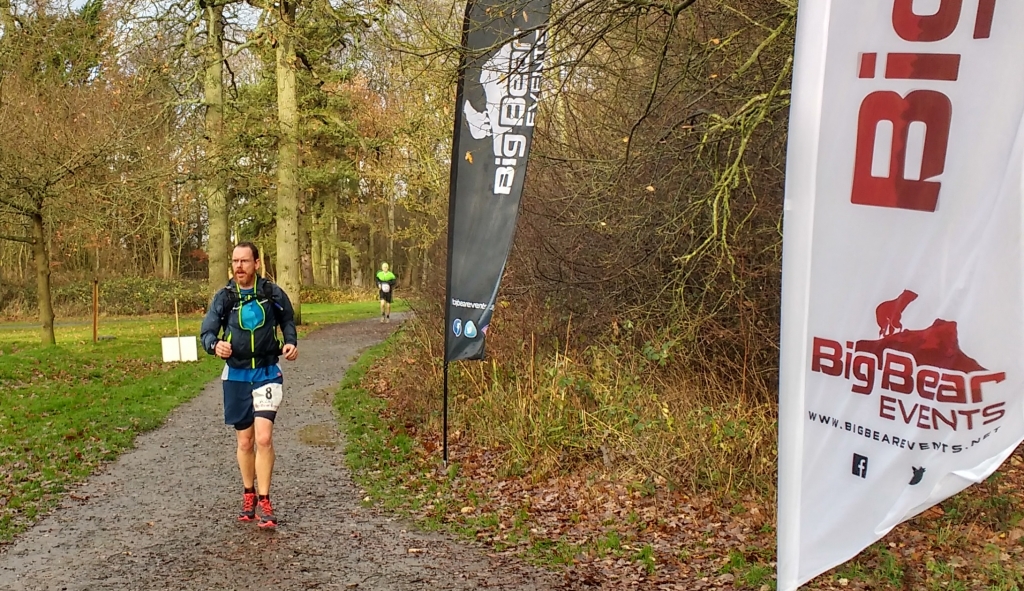
What’s a ‘Baby’ Ultramarathon?
The full marathon distance is 26.2 miles (about 42 km). Anything over that is termed an ‘ultramarathon’ or just an ‘ultra’. The shortest ultras are mostly around the 31 mile mark (50km), and these are the ‘baby’ distances in the endurance running world these days.
50 mile ultras are common and not considered ‘extreme’. There are lots of 100 mile races too, with even tougher events being held each year, some famous like the Marathon des Sables in Morocco (156 miles across desert terrain) and the Spartathlon in Greece (153 miles between Athens and Sparti).
Huh? Isn’t this All a Bit Nuts?
Tough question to answer! My own view is the people doing these events are very sane. They don’t have a screw loose, but perhaps they would if they didn’t use these challenges to focus their energies. In other words, these ultramarathon runners are just the opposite of nuts.
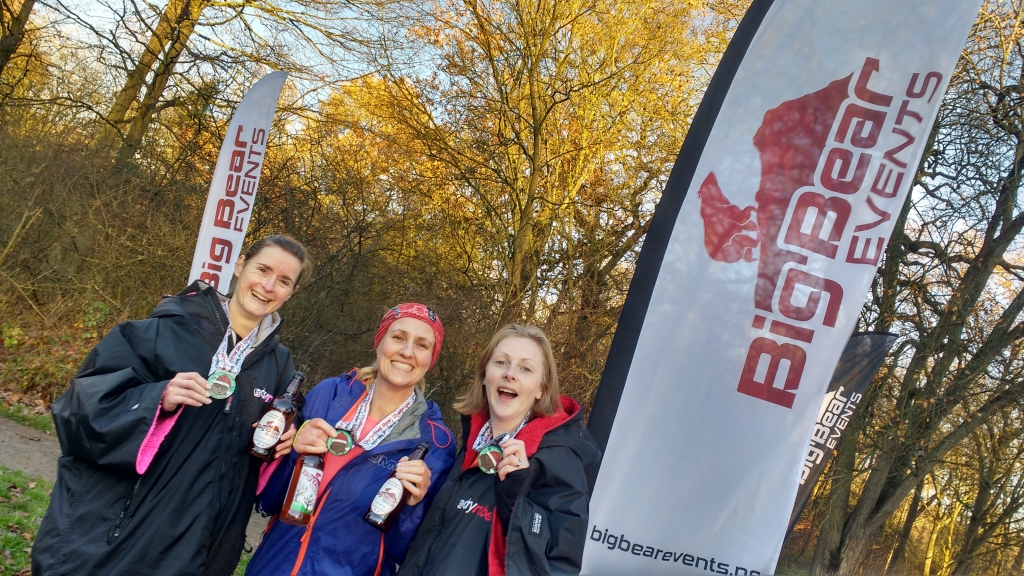
Preparing for the 50km Ultra
After running the uphill Zermatt half marathon this July, we came back to the UK and after a bit of pondering, I signed up to the 2019 Zermatt-Gornergrat Ultra. This is a significant undertaking for me, a 29 mile uphill run in the Swiss mountains, with over a vertical mile of climbing. I knew from the start I was going to need the full 10 months I had left to get into shape to finish it.
Although I’d tried hard to avoid injury in the build up to Zermatt, I had started to get problems with my right achilles tendon, which I made much worse after the race. On our way home we watched a stage of the Tour de France in the Alps, and I foolishly ran up and down a few miles of a mountain stage the morning of the race. With hundreds of people on the course I ran much more quickly than I should have, which hammered my achilles, and put me out of running for months with tendinopathy. In retrospect I should have continued running at a lower intensity, as this is now an acknowledged way to improve the tendon strength, but I didn’t know that at the time.
Back home I joined the local gym and did lots of other types of training, including a marathon-distance indoor row. This built my general fitness, but didn’t do much for my running. After getting some advice from a physio friend, and after several months of self-managed physio on my tendon, I started to run again. The achilles felt good, so I joined Ju running the Robin Hood Half Marathon in Nottingham, which went well for both of us.
Next stage was to start getting some longer runs in. When our physio friend Kerstine suggested the Big Bear Challenge about three months ago, I signed up for it, knowing it would be a good stepping stone. I cranked up my training slowly but steadily, until I was able to do a marathon one day, taking about 4 and a quarter hours, running alone doing two laps of a local 13.1 mile loop.
That was about three weeks ago, and since then I lowered my running distance, doing just a few half marathons. In the week before the Big Bear event I did only about 10 miles of running, and hoped to be ready for the full thing. My aim was to run 50km, the baby ultra, 31 miles.
On the Day: How it Went
The run was held on a Monday from 9am to 3pm (don’t ask us why a Monday, we don’t know). Having got up at 5:30am, Ju drove us through the traffic-heavy two hours down the M1, as she had volunteered to help out on the day. The weather forecast was for rain between 9am and 11am, so I’d brought my waterproof running coat, and we’d loaded up with food and drink for the day (although we needn’t have bothered as everything was provided).
I’d decided beforehand to use my running backpack, rather that stop at the ‘aid station’ for food and drink. This meant carrying a couple of kilograms of a water-orange juice-honey-lemon juice-salt mixture, and a malt loaf. This wasn’t a good energy-conservation strategy (almost everyone else used the aid station and avoided the weight), but I wanted to prove to myself that I could keep running (however slowly) for the full 50km.
The event turned out to be pretty weird for me, having never done this format before. Come 9am, having been briefed on the course, 68 of us all jogged off on the first lap, some going MUCH faster than me, as it turned out most folks were doing half or full marathons. In the end, 12 of the 68 runners went longer than a marathon (the ‘winner’ did 39.6 miles in 5 hours, 40 mins). My idea was to try and stick to 10 min mile pace for as long as I could, which in theory meant I could do at least 36 miles.
Off we jogged around the forest trails, with the runners quickly thinning out and the heavens opening. The main effect of the rain was to fog up my glasses which put me off a bit, and to get my feet wet and muddy. I was thankful to be wearing trail shoes, as they’ve big lugs which helped get grip on some of the sections of trail. I did discover some blisters when I finally took them off though, including quite an impressive blood blister, which I didn’t feel at all during the run.
Time and distance are bit of an oddity on these things, I think. I know from previous attempts to do endurance challenges that there are three main mental stages for me: the first half of the event is relatively good, the next third or so is tough, and the last part is slightly better. This run wasn’t much different.
After two hours of running the rain had stopped and a kind marshal had taken my coat back to the aid station for me (it rained again later, but I didn’t care by that point). My glasses cleared and my watch said I was doing a steady 10 min pace. I was running alone by this point, with my phone playing music into my ears. The only problem I had was my left leg wasn’t lifting up properly, a weakness I discovered in the marathon I did in preparation, and I started to wonder if it would get worse and knock me out of the run.
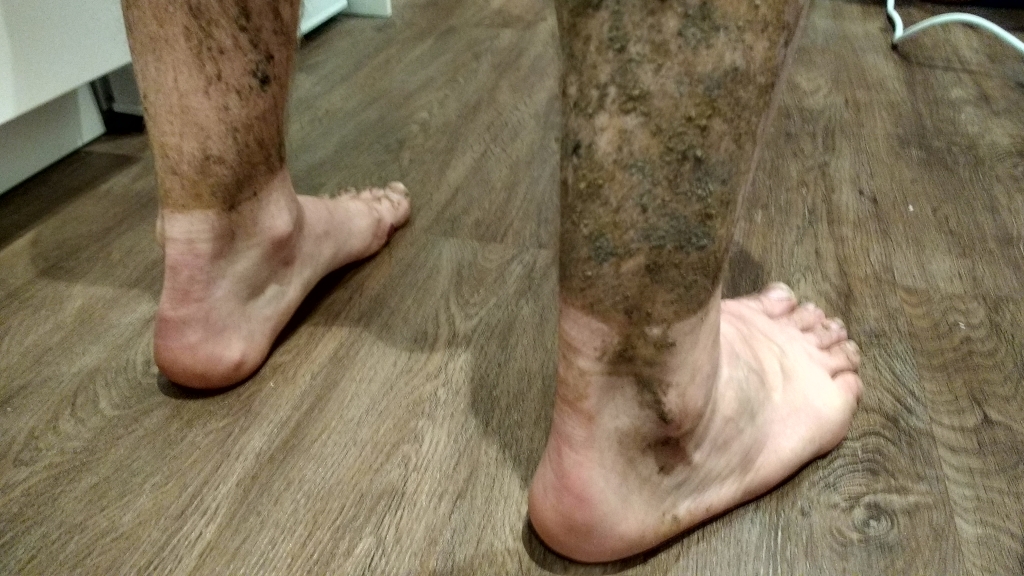
Another hour later my right leg joined the left and started to display the same weakness, and my pace dropped off as I struggled to keep both legs swinging forwards. Thankfully the course was almost flat, as I’d not have been able to get the lift needed to run uphill.
I like having drink available all the time, and I sipped some of the concoction on my back whenever I felt thirsty. Over the full race I drank around 2 litres in total, which was probably not enough but I felt OK. I ate some of the malt loaf every 30 minutes (as I’d practised in training), and had no problems with my stomach.
By the 3 hour mark I was predictably starting to struggle mentally. My legs were both tired and not flowing. My watch was reporting my pace speeding up, although I was sure I was slowing down (I was right, the watch was fooled by the trees). The idea of running another 3 hours seemed completely impossible, or at least very unpleasant. Thankfully at this stage Kerstine, a highly experienced ultra runner friend, ran some of the next lap with me, although the fact she made a lengthy phone call on the run, without getting out of breath (after about 20 miles of running), and all the while going faster than I wanted to run, was a bit disconcerting!
I can’t report much from the next 2 hours. I just slogged on, thankful that my legs weren’t getting much worse, watching the miles click up on my watch (which was still reporting 8.5 minute miles). Eventually the watch ticked up towards 29 miles, three miles further than I’ve ever run, and I started to think I was going to make it, the full 50km, thank god!
That final lap was slogged around. I’d been running for over 5 hours and was ready to stop. A nagging doubt sprouted up though: had I actually done the 10 laps I needed to get over 31 miles? My watch said yes, I’d done over 32. Having celebrated at the finish line, arms in the air etc, the organiser Paul quietly pointed out no, I’d only done 9 laps. He’d said at the start GPS watches don’t work well in the forest, and he was right, I’d another 3.3 miles to run. Grim!
I quickly handed my backpack to Ju to lighten up a bit and headed out again. It’s amazing how much you have left sometimes, when you think it’s all gone. It took concentration and talking myself up to keep the legs turning over, but after so long you’re in a kind of zone, where running and not running are almost the same thing. Finally the end came in sight again, and after a more muted celebration (holding up all ten fingers and thumbs), I finished.
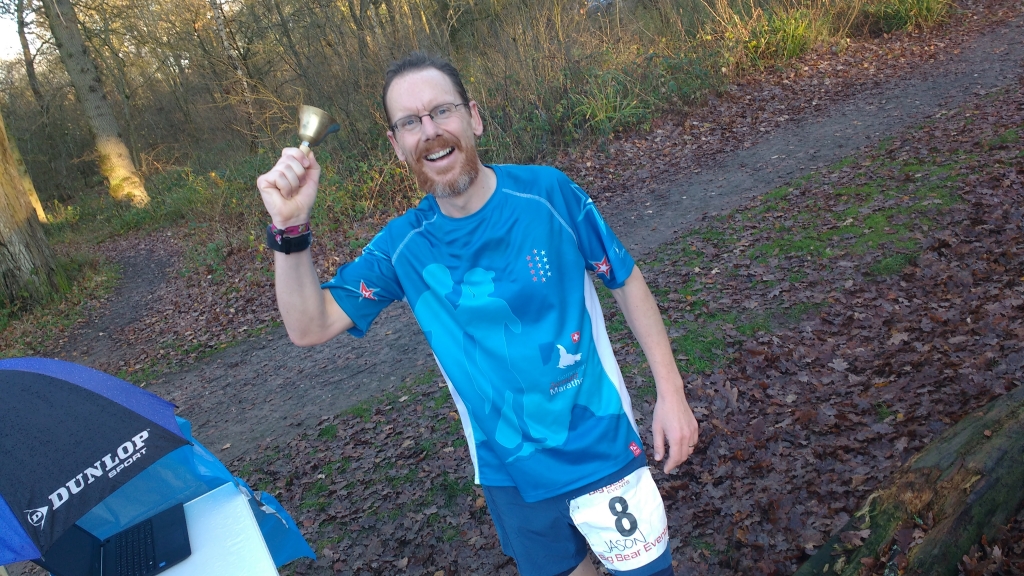
5 hours and 47 minutes, and 33 miles run, I was placed 6th (although it was much more a race versus yourself than other people, given the fact most people weren’t aiming to run the full 6 hours). Kerstine, who was just using this as a training run, finished 4th as first female. The chap in front of me in 5th place was 62 years old, 16 years older than me.
The Aftermath
I’m writing this almost 24 hours after finishing running. Ju drove home, which was very useful as I had to use my hands to lift my legs one by one into the car. I ate like a horse, two mince pies and two flapjacks were sucked in like air. I also made sure I drank lots of fluids.
Last night I experienced hot flushes, where I was sweating even though I felt very cold. That lasted until about 2am. My legs didn’t ache as much as I’d expected, but it was an eye-opener finding how hard it is to turn over in bed when your legs don’t work. I’m very grateful my legs function most of the time.
By now I’m pretty much able to walk, slowly. I can get up and down the stairs, although in a pretty awkward fashion! Ju’s taking good care of me fetching food and drinks. Other than that, all seems good.
Lessons Learned from a First Ultra
All of these runs are an experiment, and I pick up new lessons each time I do one. In this one I learned:
- My legs aren’t strong enough for this stuff. I need to do significantly more conditioning exercises on my quads (squats, lunges and so on).
- Any idea I’d be a natural endurance runner has been dispelled! Kerstine ran for a while with a triathlete who’d done a double Ironman (4.8 mile swim 224 mile bike and 52.4 mile run). He’d cycled 40km to the run yesterday. Several runners had multi-marathon challenges under their belts (1000 miles in 100 weeks, for example). Kerstine flew round compared to me, and wasn’t even trying.
- Although I’m not a strong runner, I am stronger than I imagined I was 3 hours in. I’m amazed I managed almost 3 more hours.
- My drinking and eating strategy worked well, although I don’t know how well it would work for a longer run.
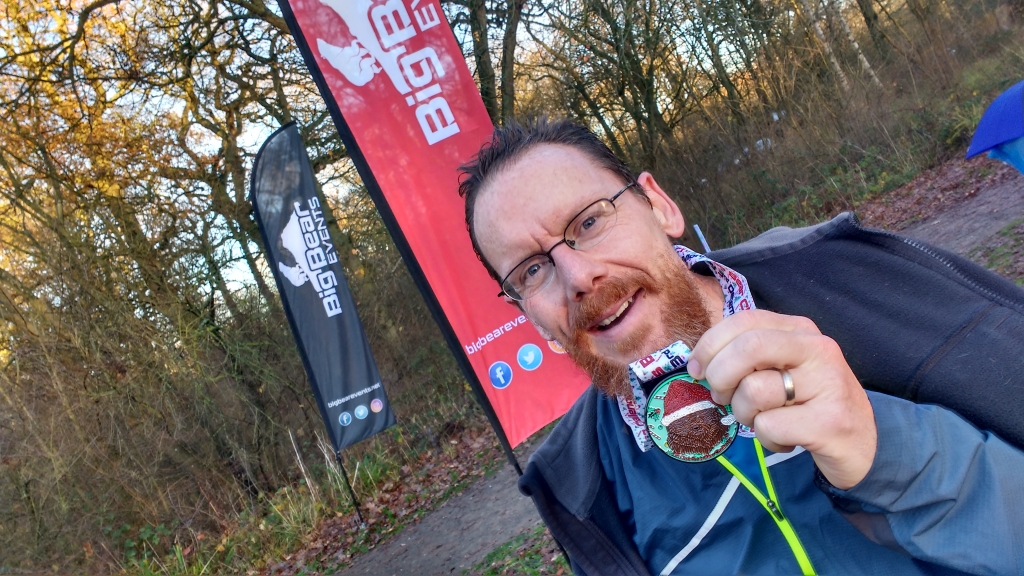
What’s Next?
Steady winter training. More leg strength exercises. More long slow runs. Eventually we’ll crank up the effort again next spring building up towards Zermatt. For the moment though, a lot of sitting about as my legs come back into action!
Cheers, Jay



Massive respect to you. What you’ve achieved its amazing. I love how running makes me feel afterwards, but cannot begin imagine how I’d feel after 6 hours. Well done and good luck. Andi x
Thanks Andi! After nearly 6 hours I can honestly say I felt pretty numb. I imagined I might be elated at finishing but it was more of a relief. Need to get working on my quads or Zermatt will break me! Keep on running, cheers, Jay
Huge respect Jay! I ran my first parkrun on Saturday and I can only imagine doing the distance that you achieved. To run for nearly 6 hours is an amazing achievement. Keep up the training and I hope you succeed at Zermatt, a place we visited in 2017, so I can picture the challenge you have ahead of you.
Well done you mate. It’s a hard thing to start running, a giant mental stride. A first 5km = massive kudos to you, don’t stop mate. Cheers, Jay
Saying ‘Well done’ sounds a bit feeble for all that effort but – well done! I really don’t know how you did the last lap after that false finish.